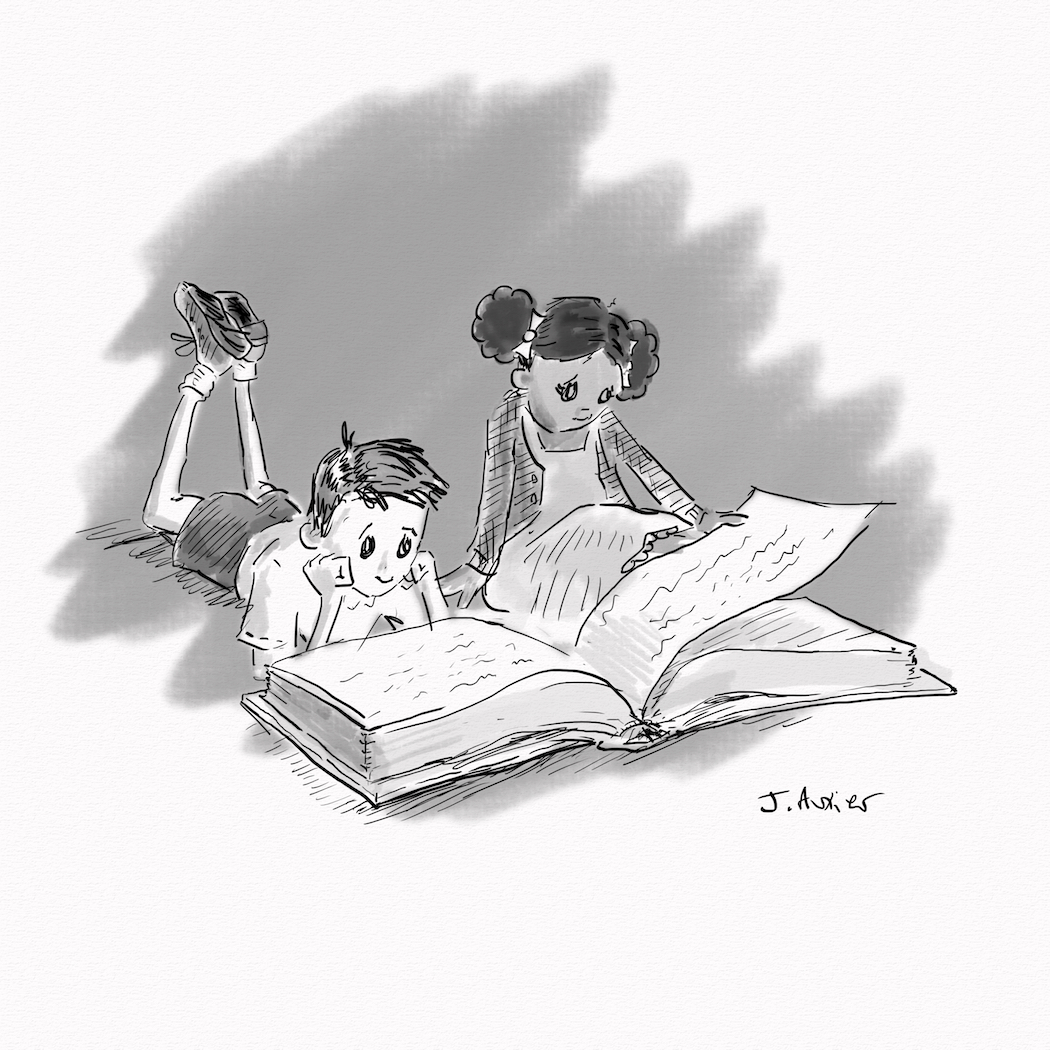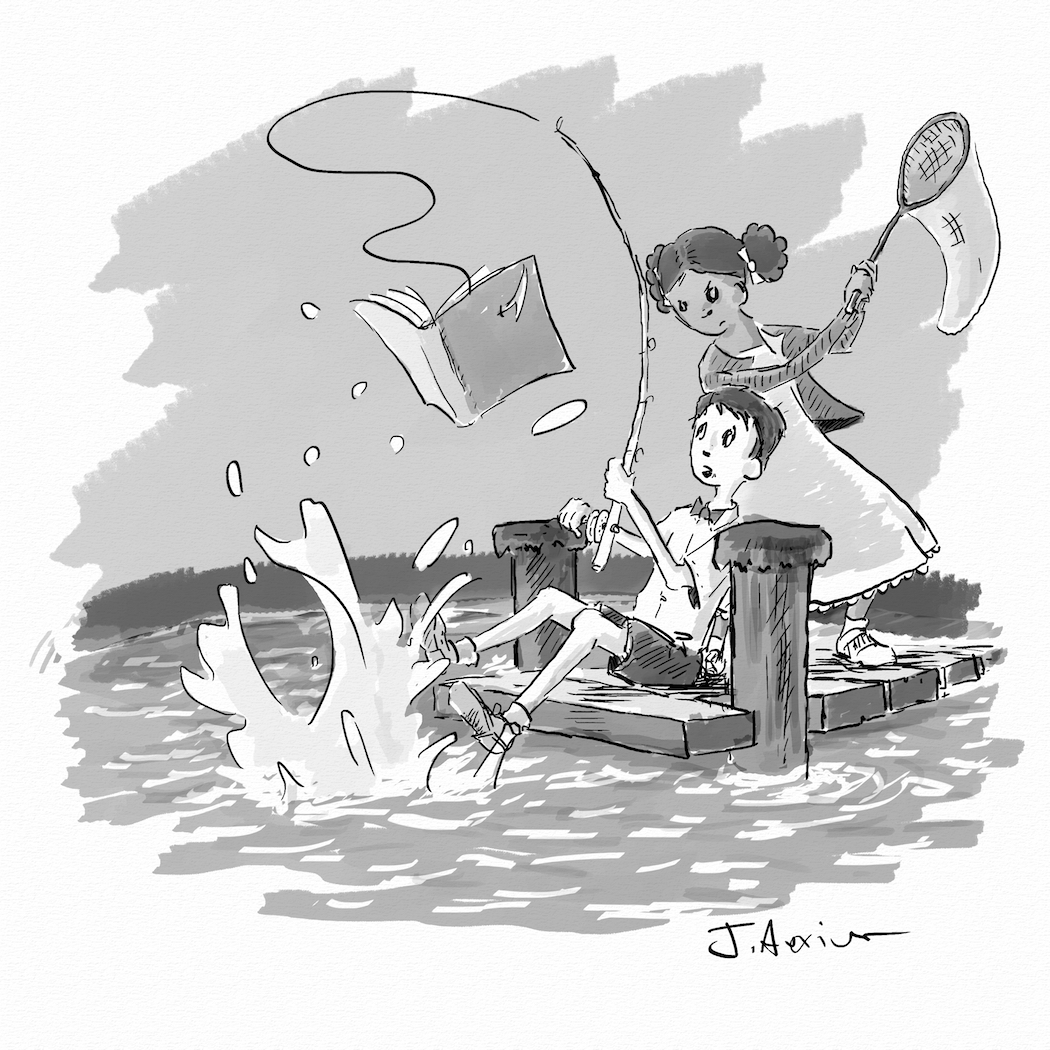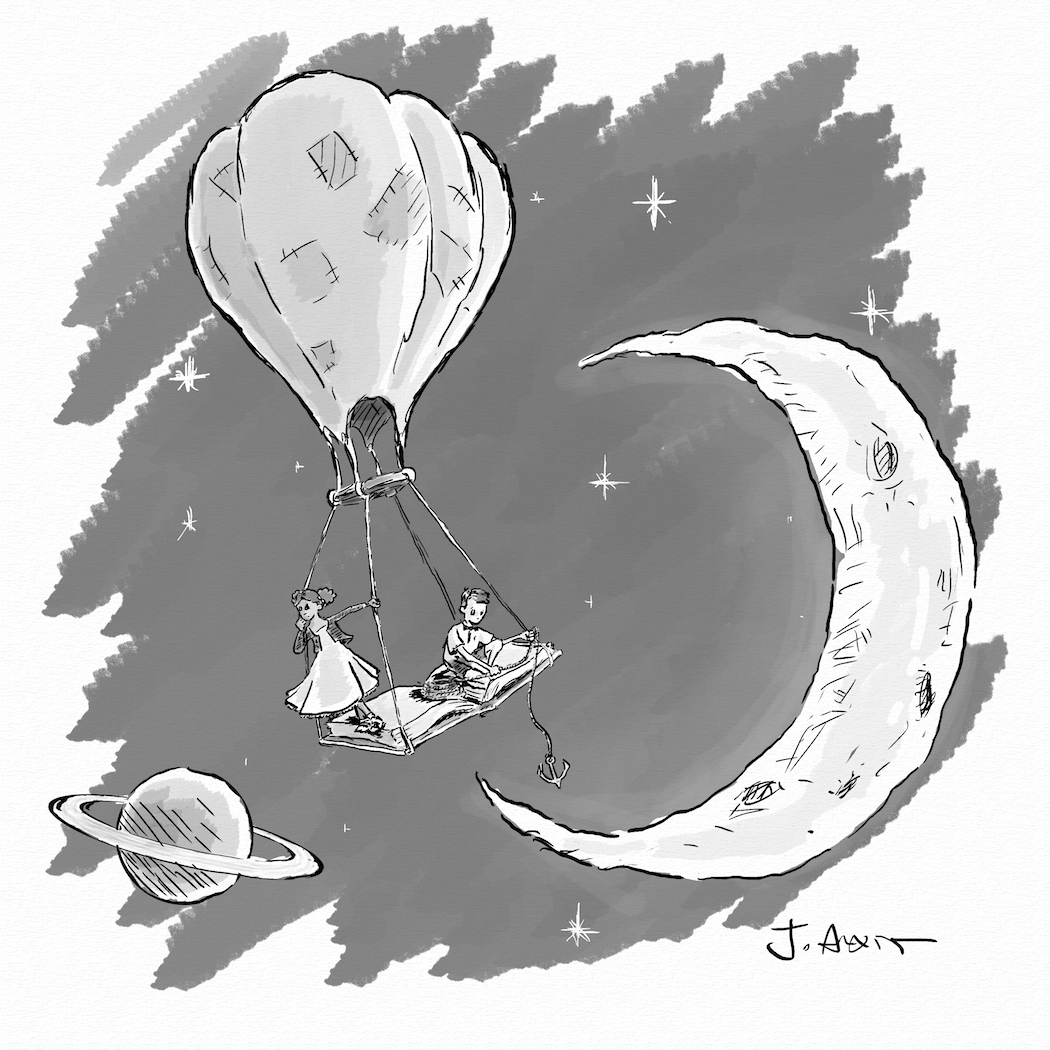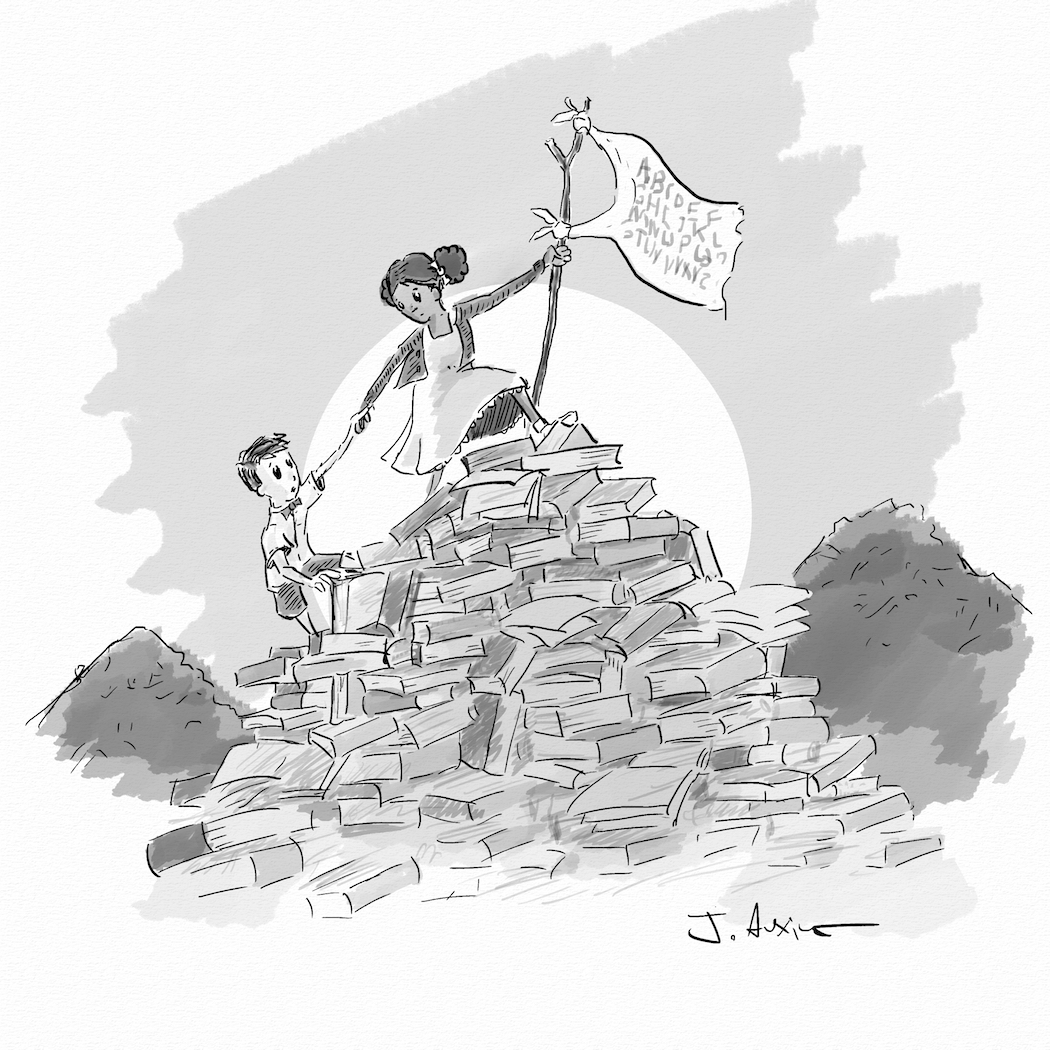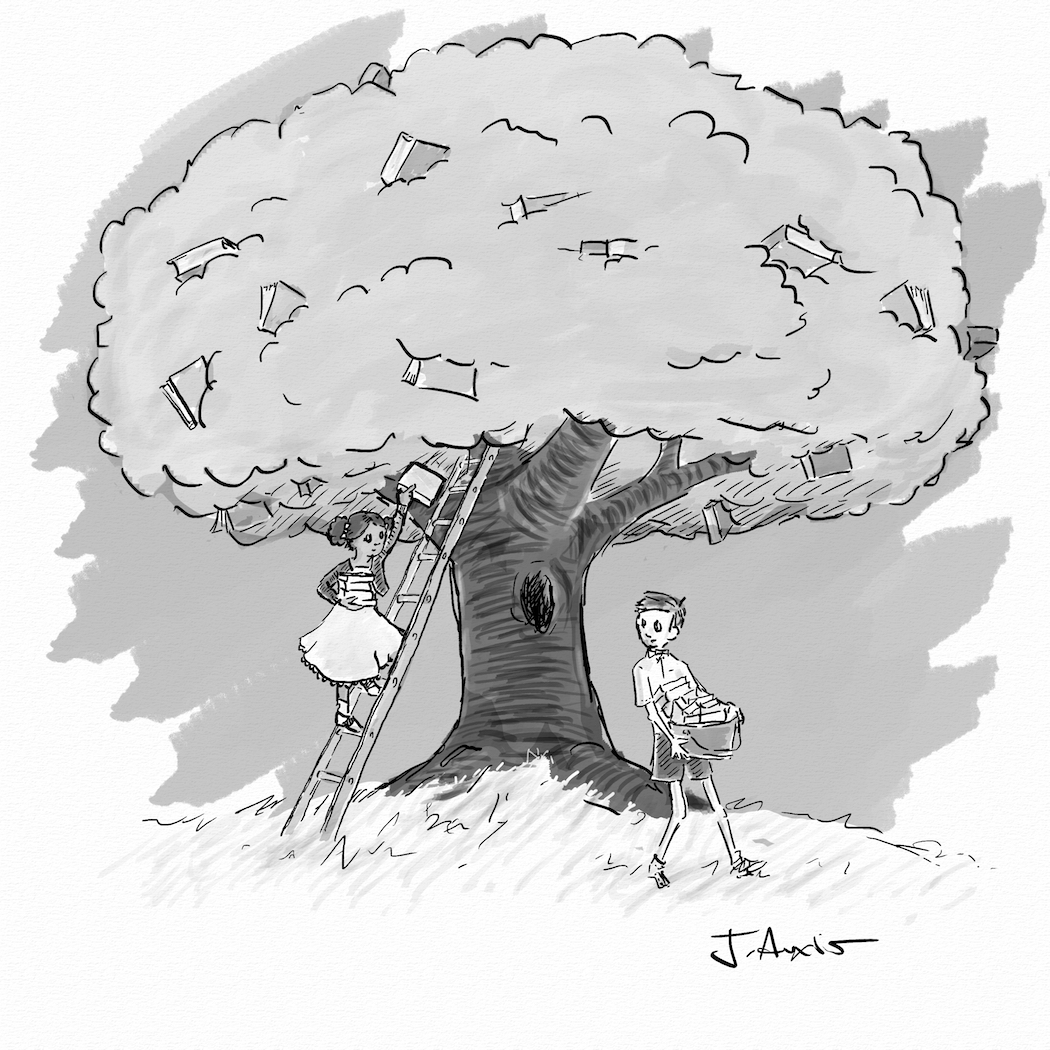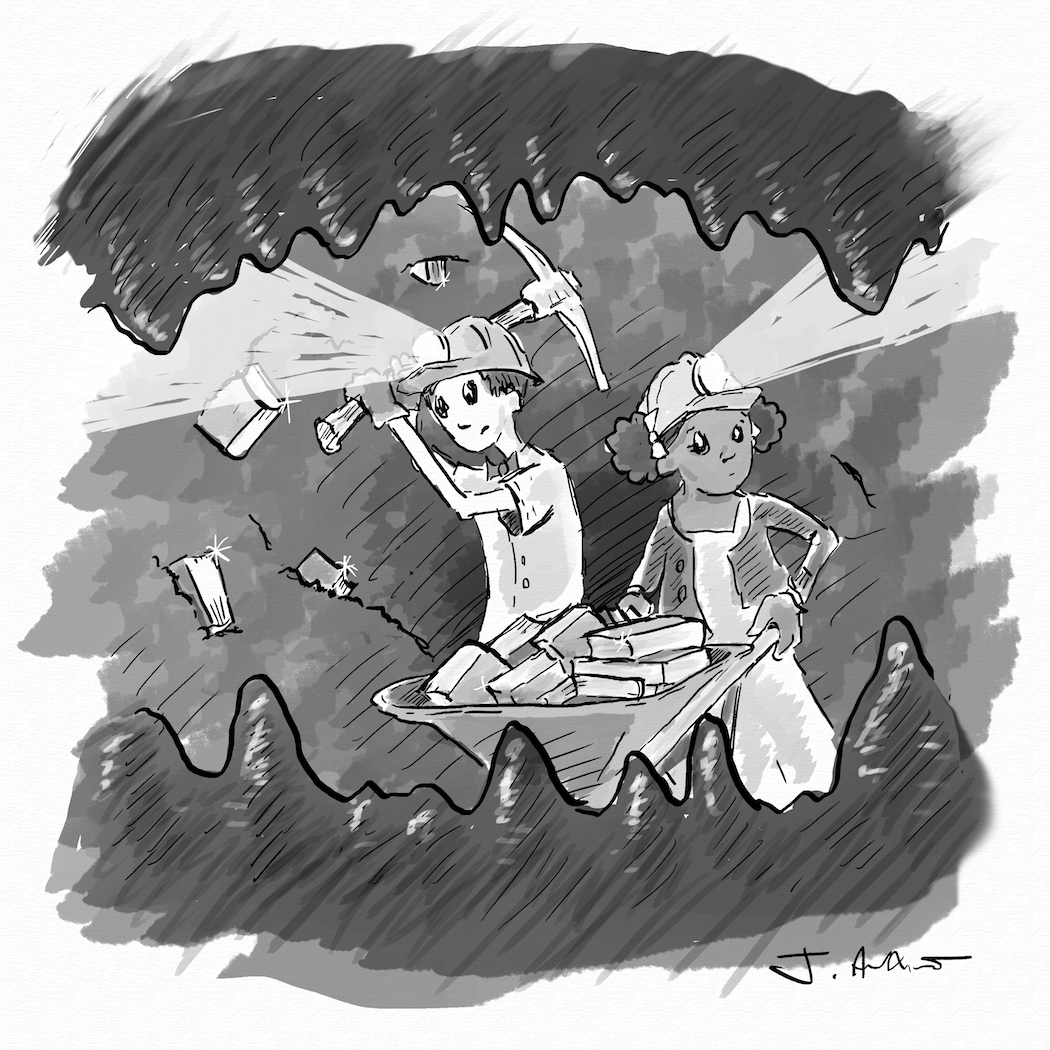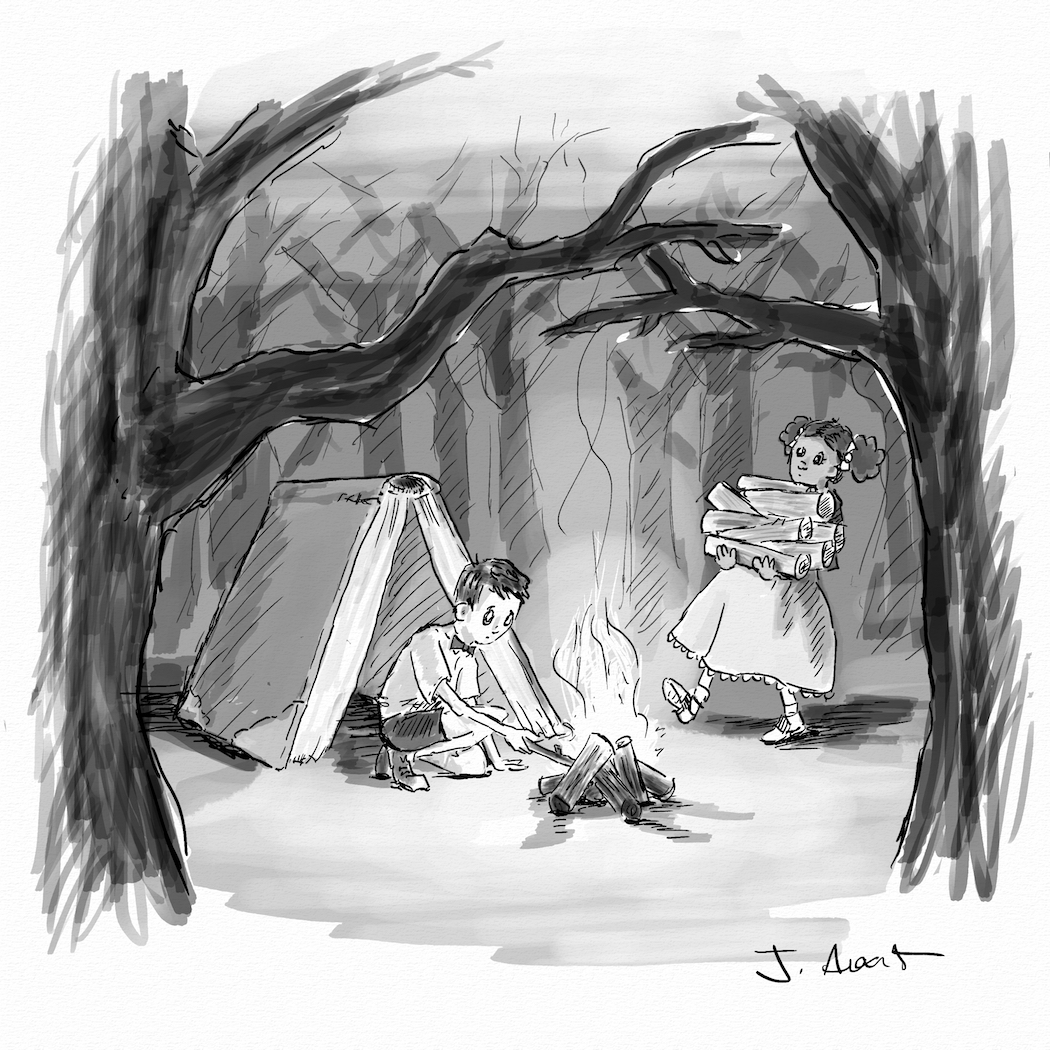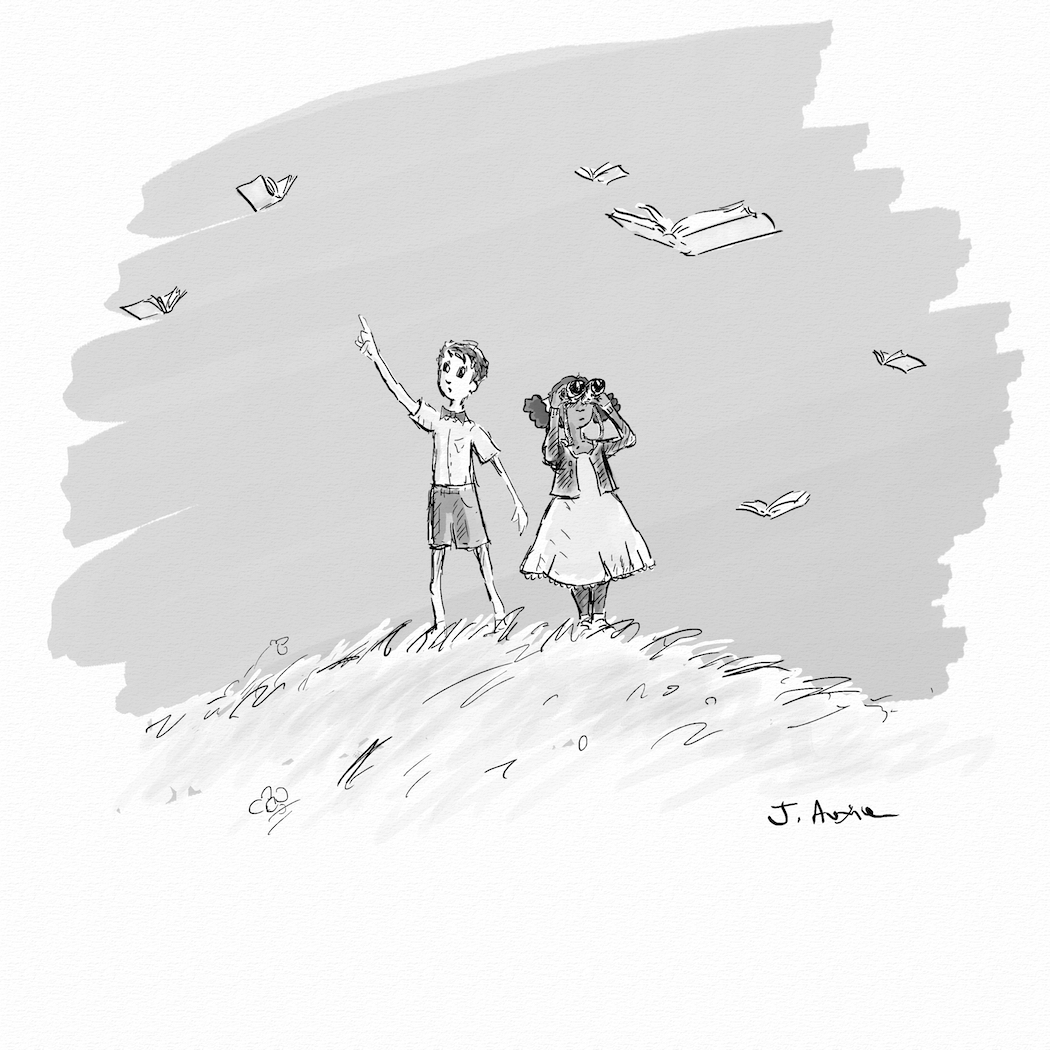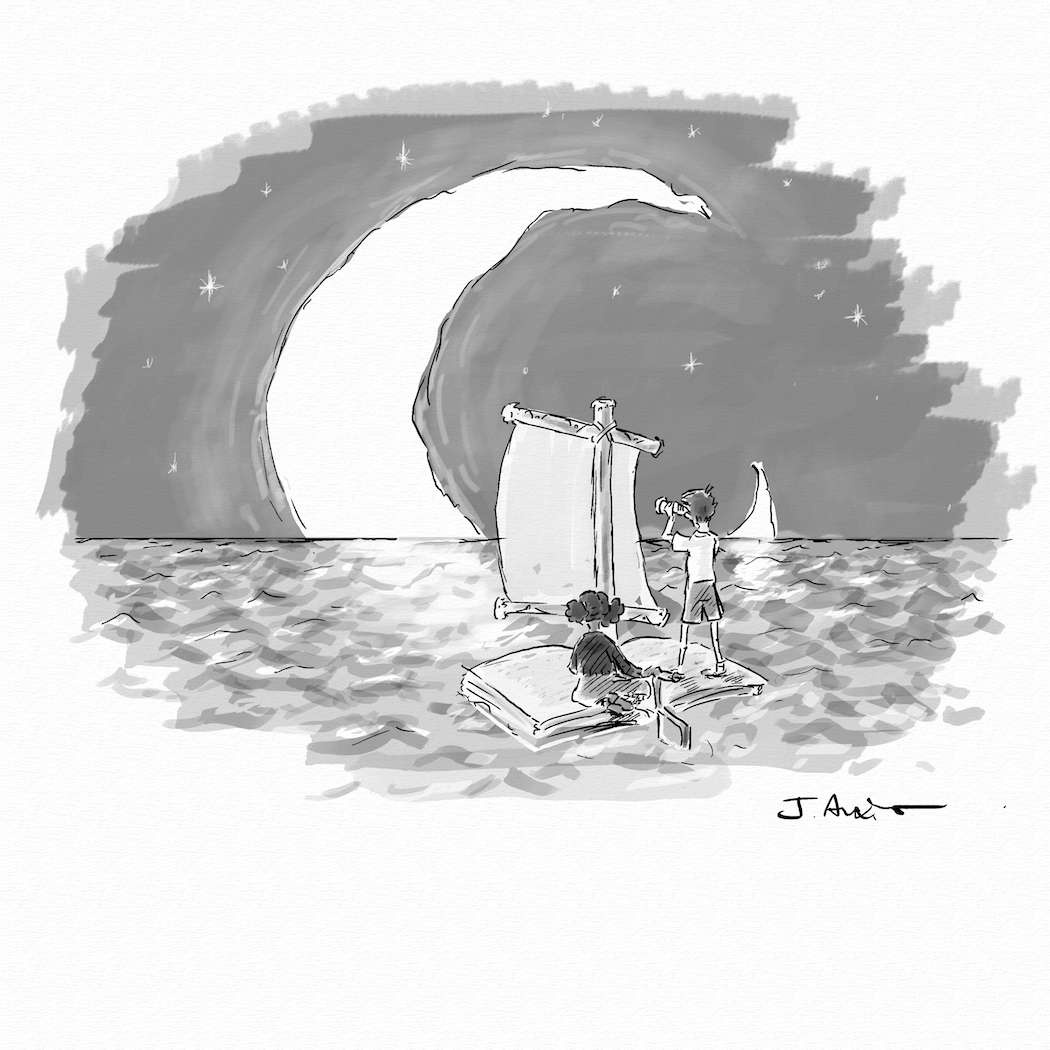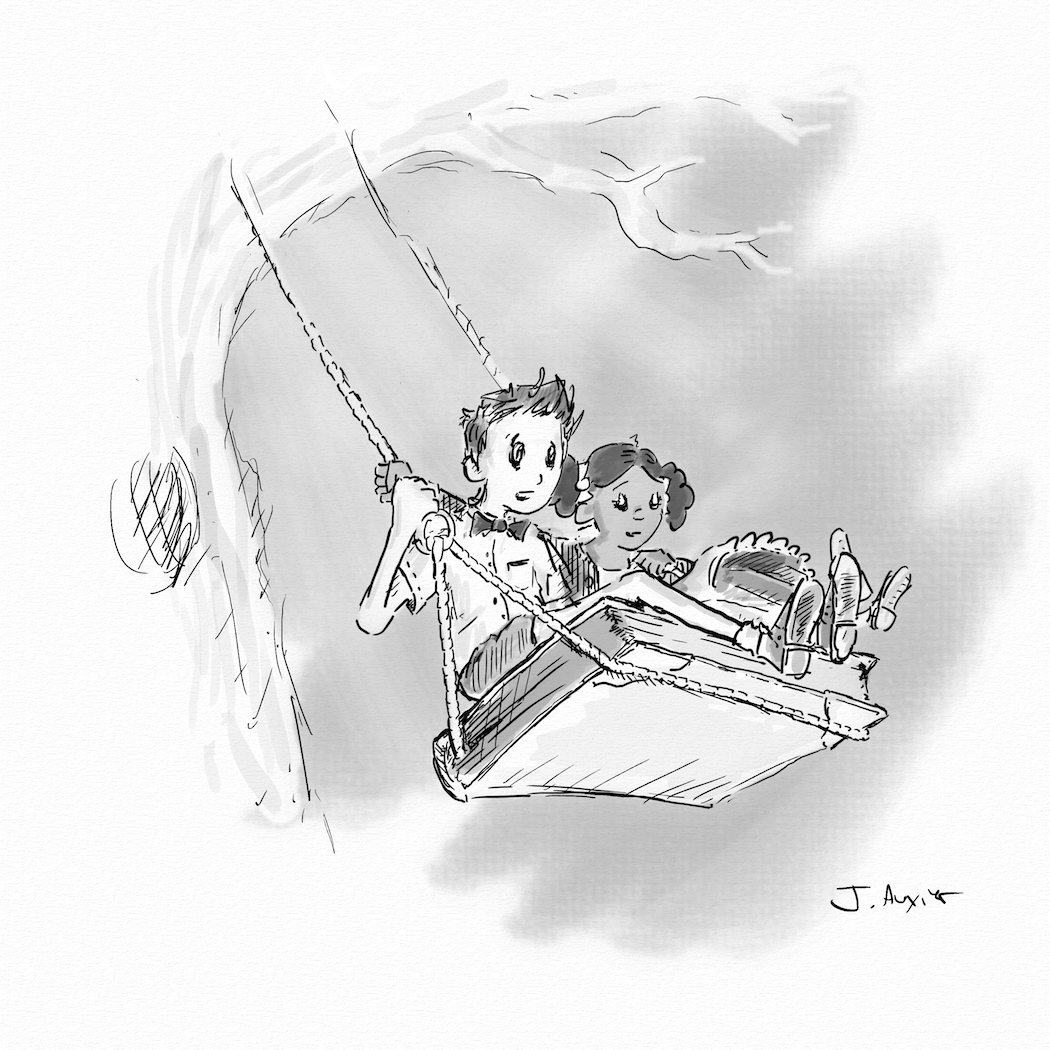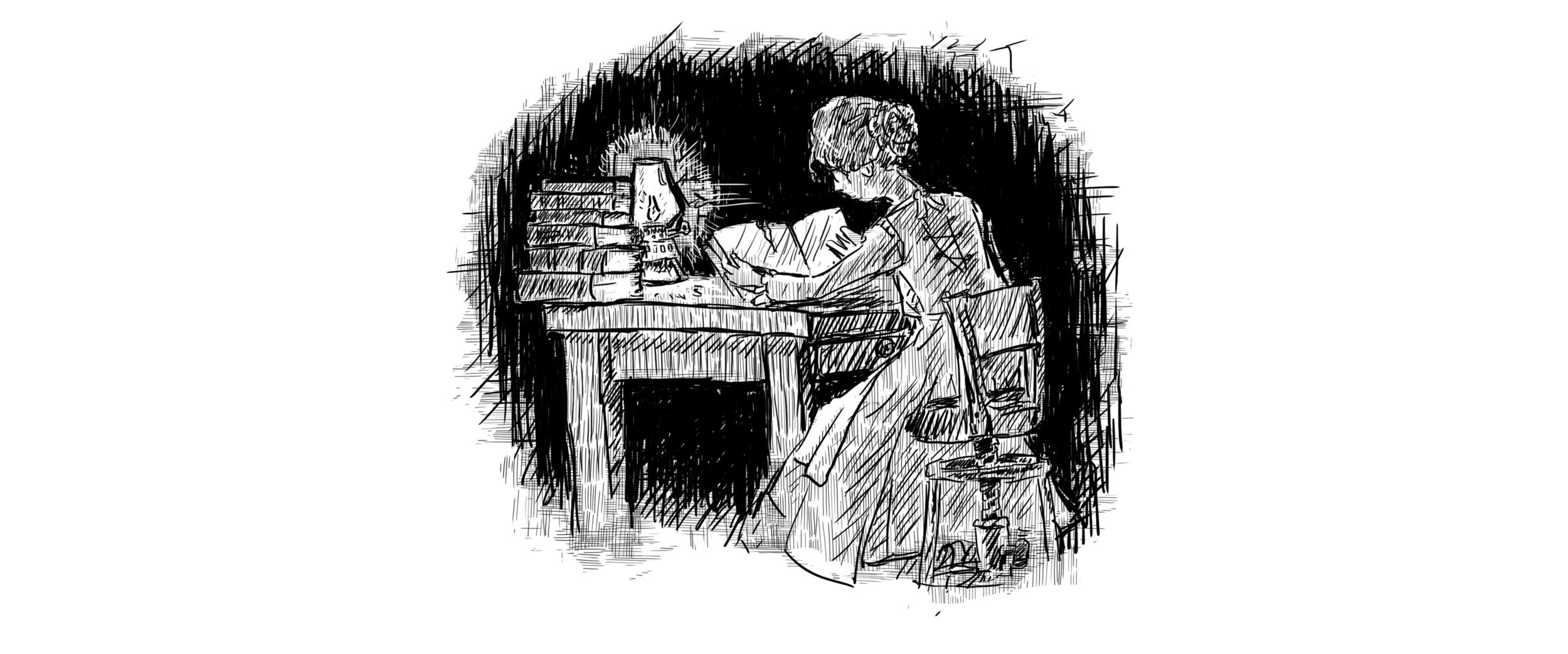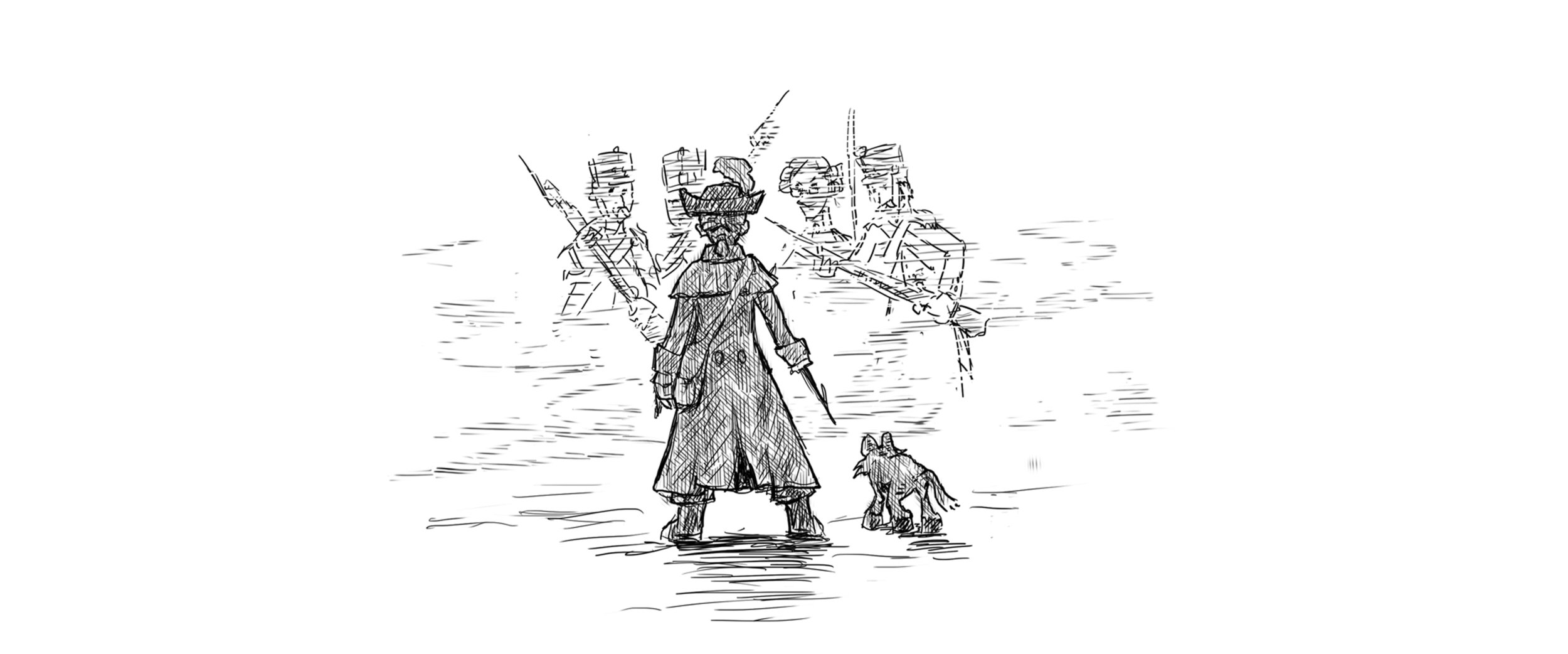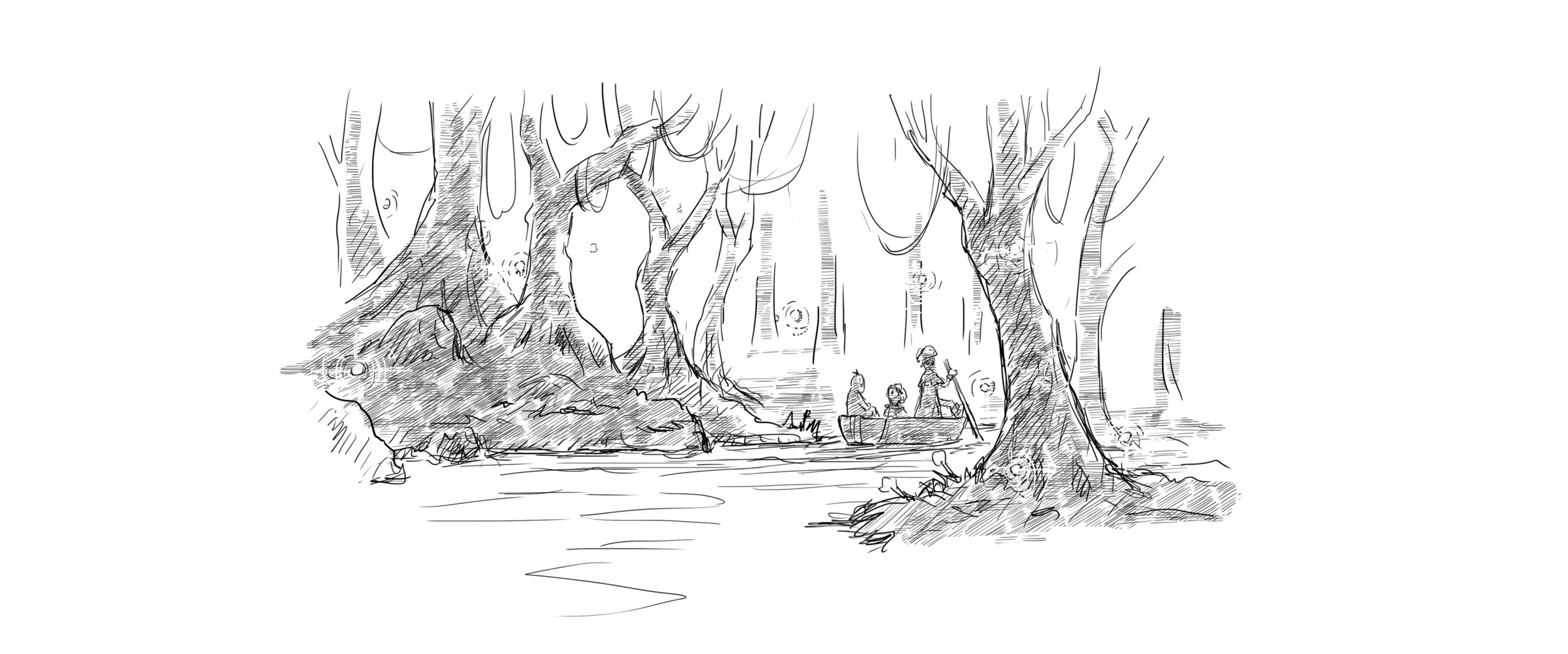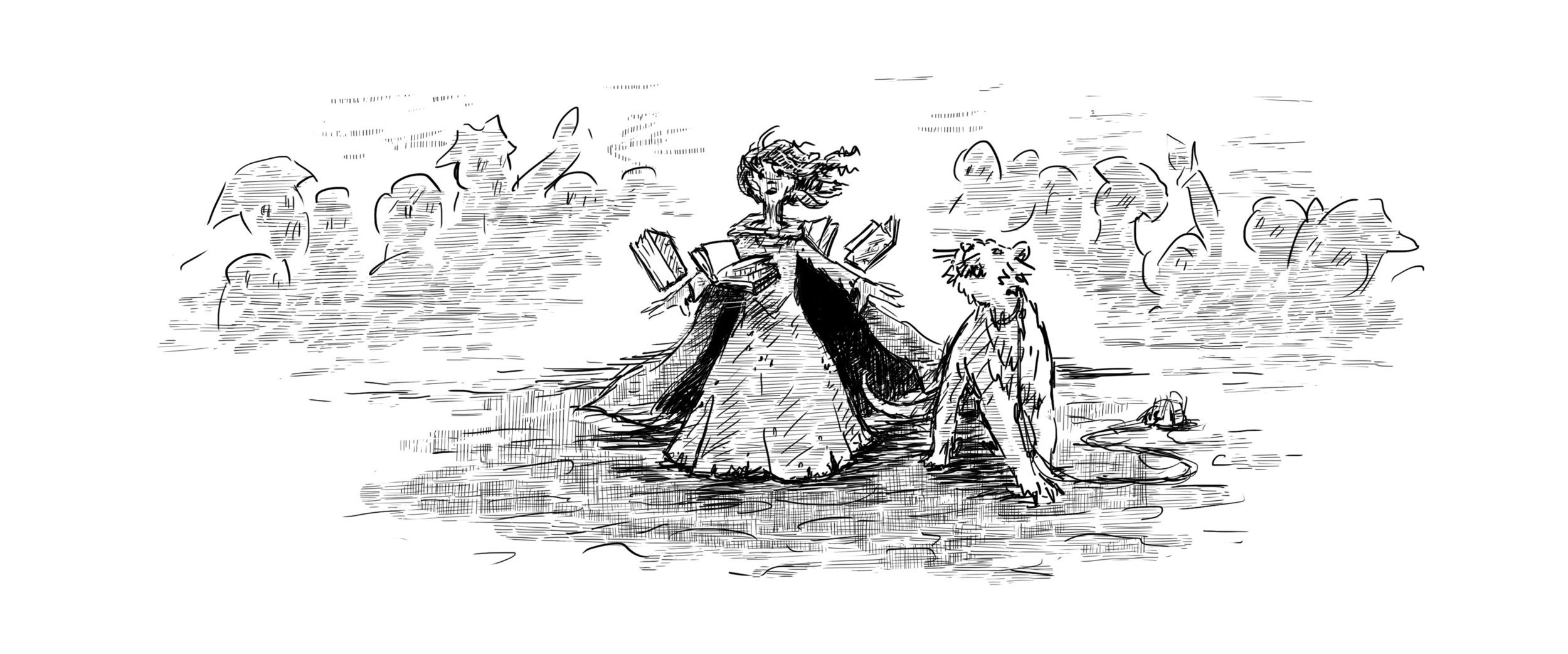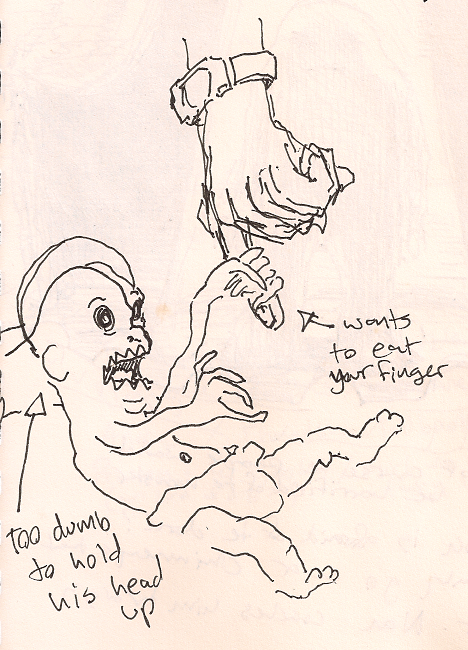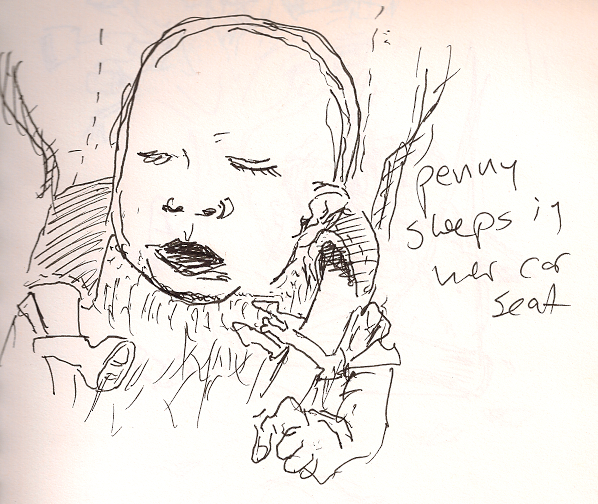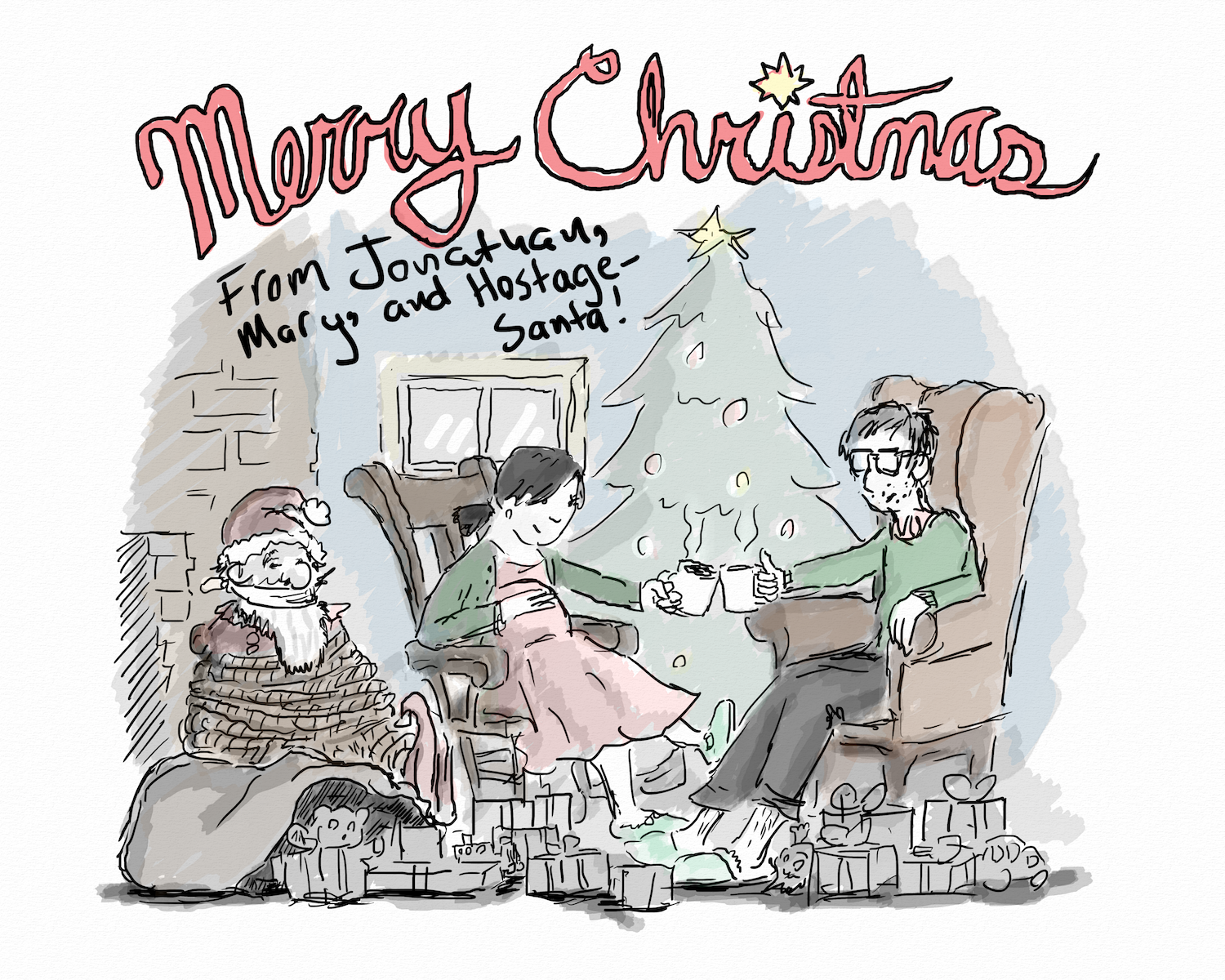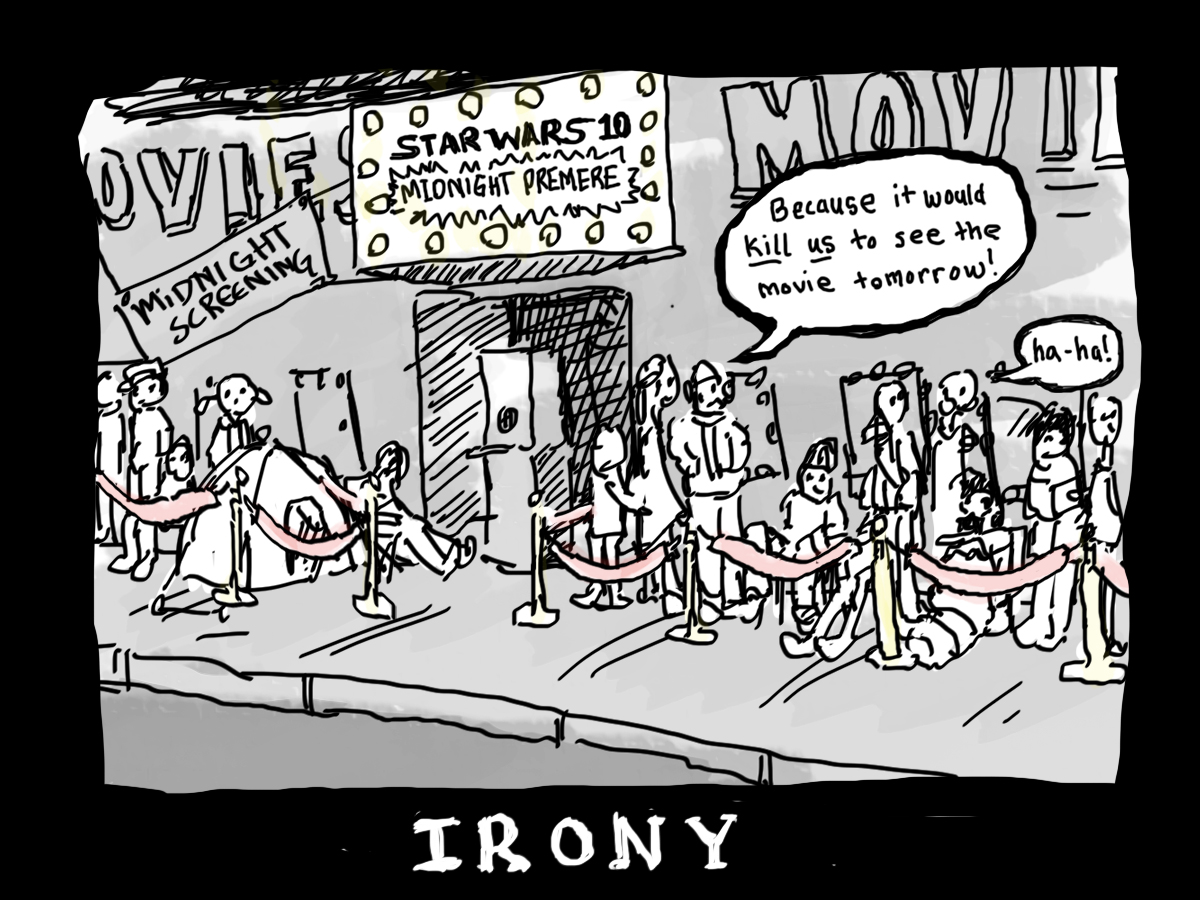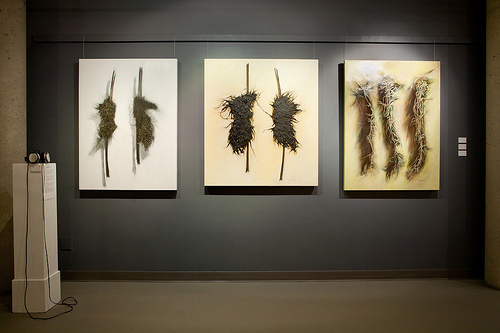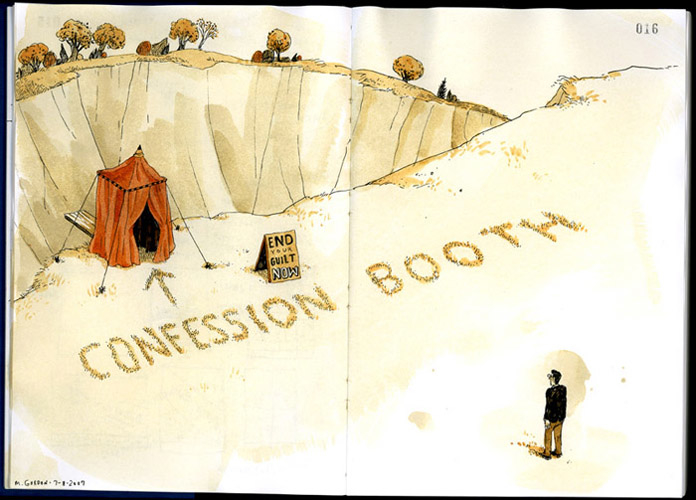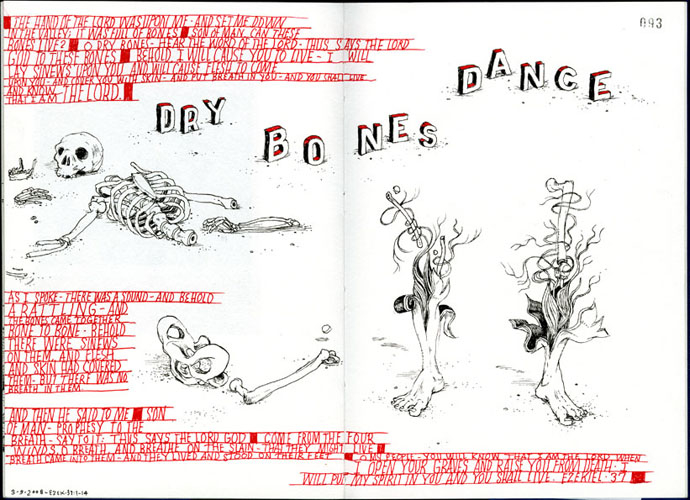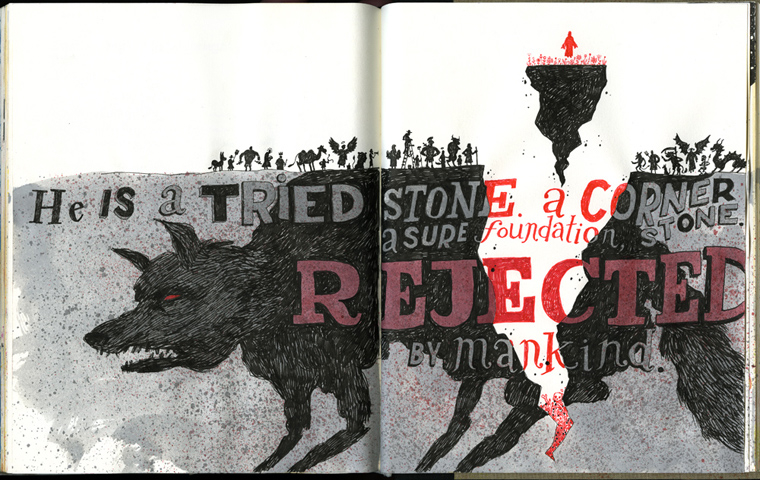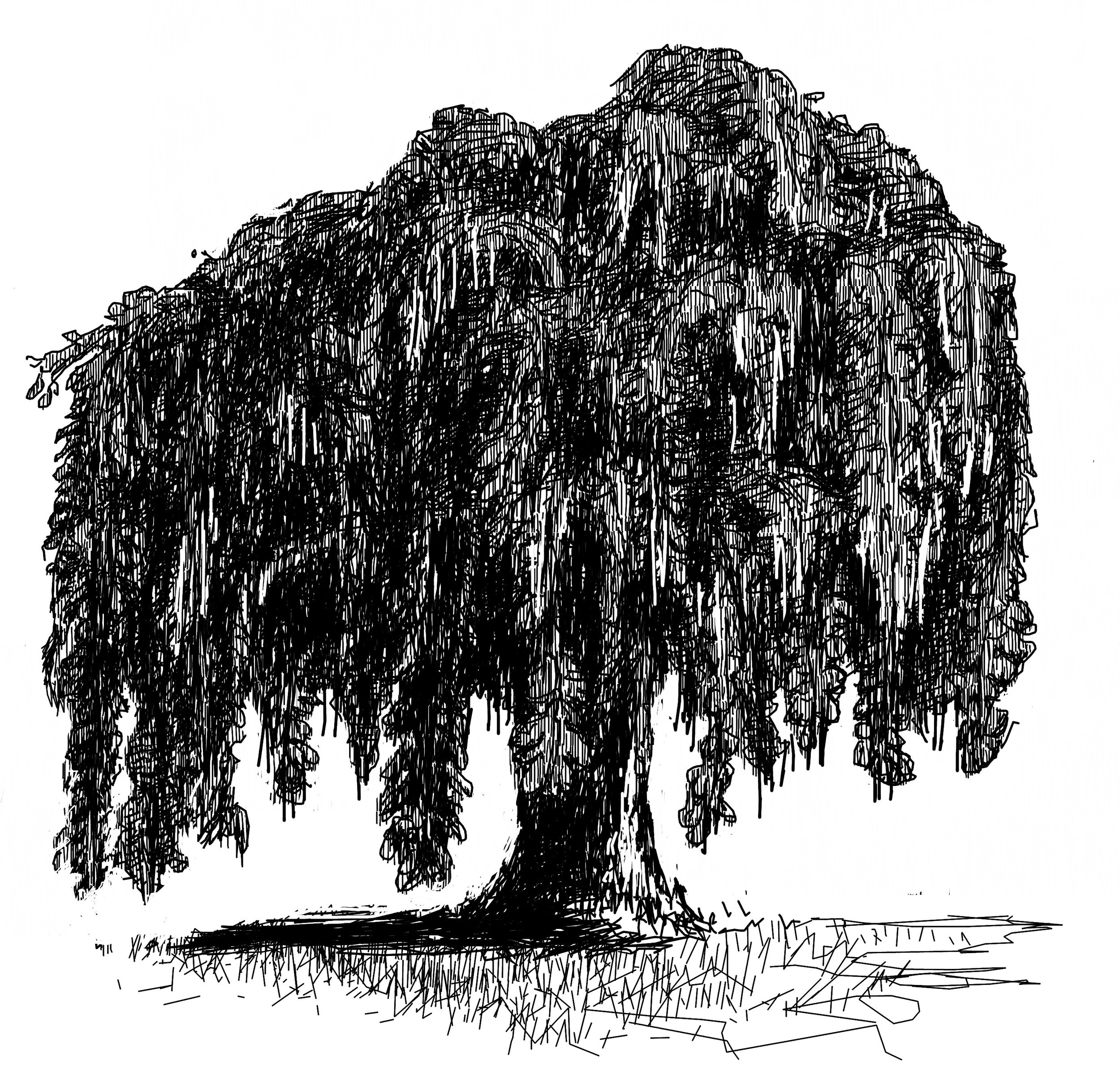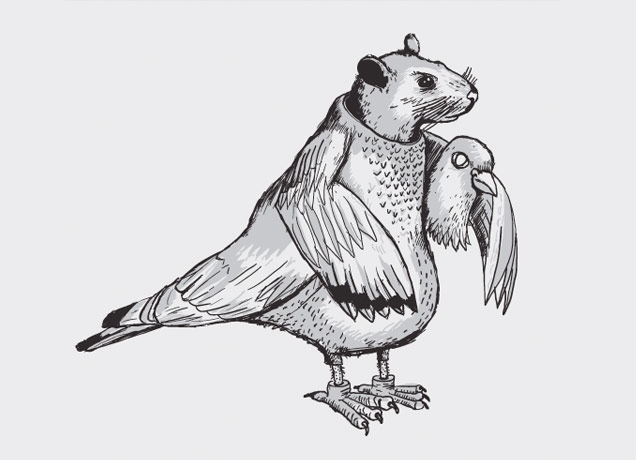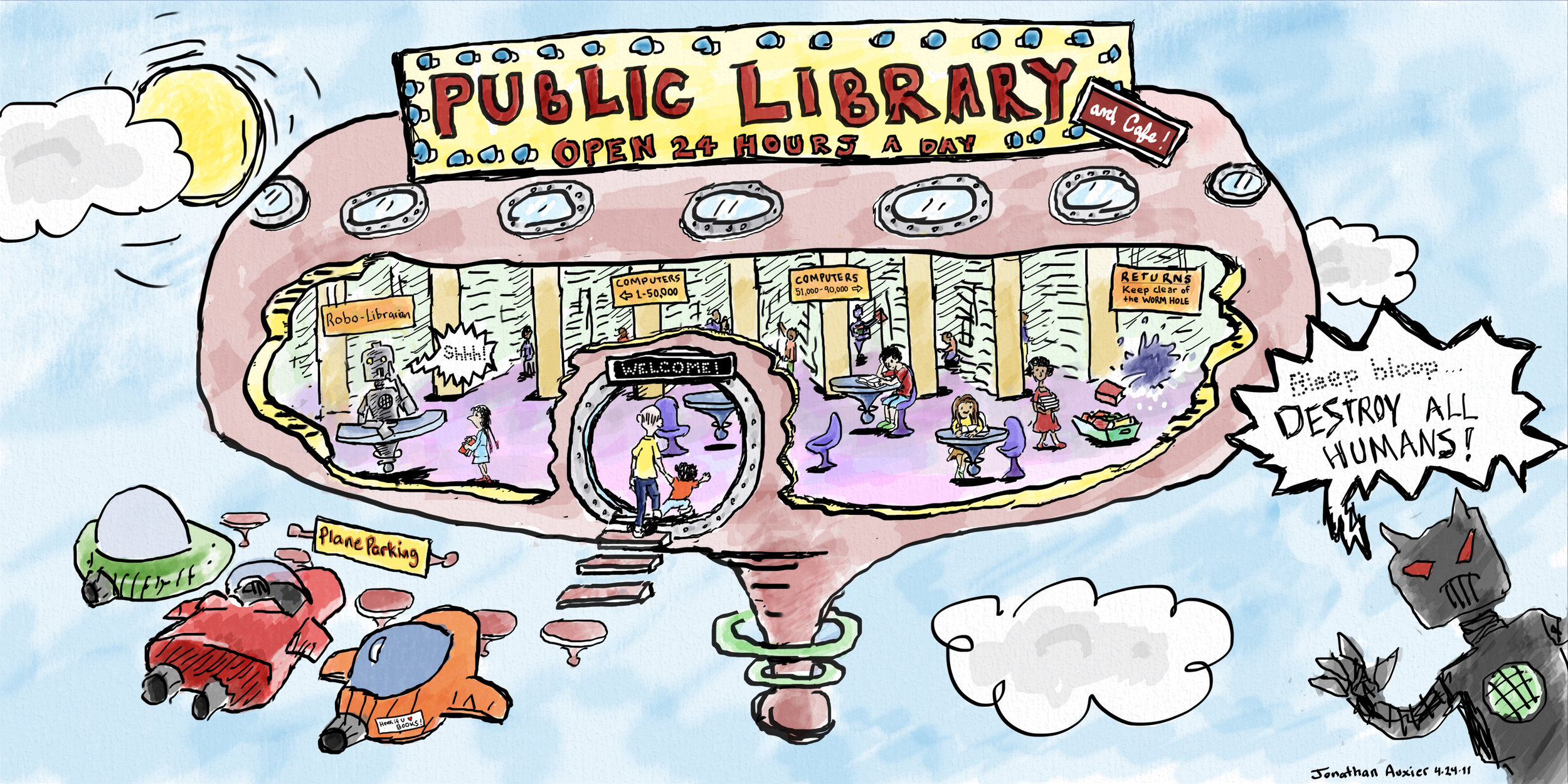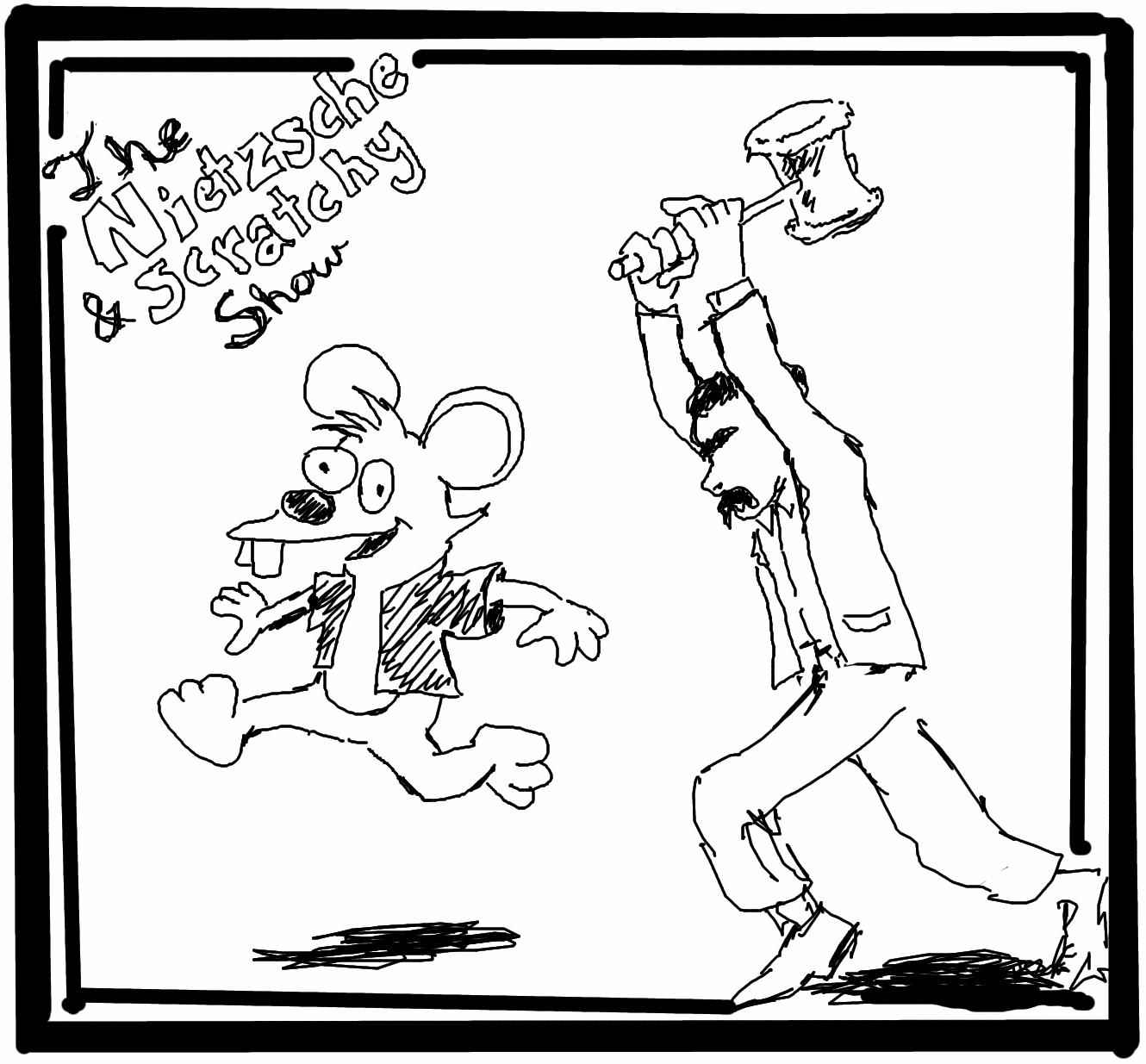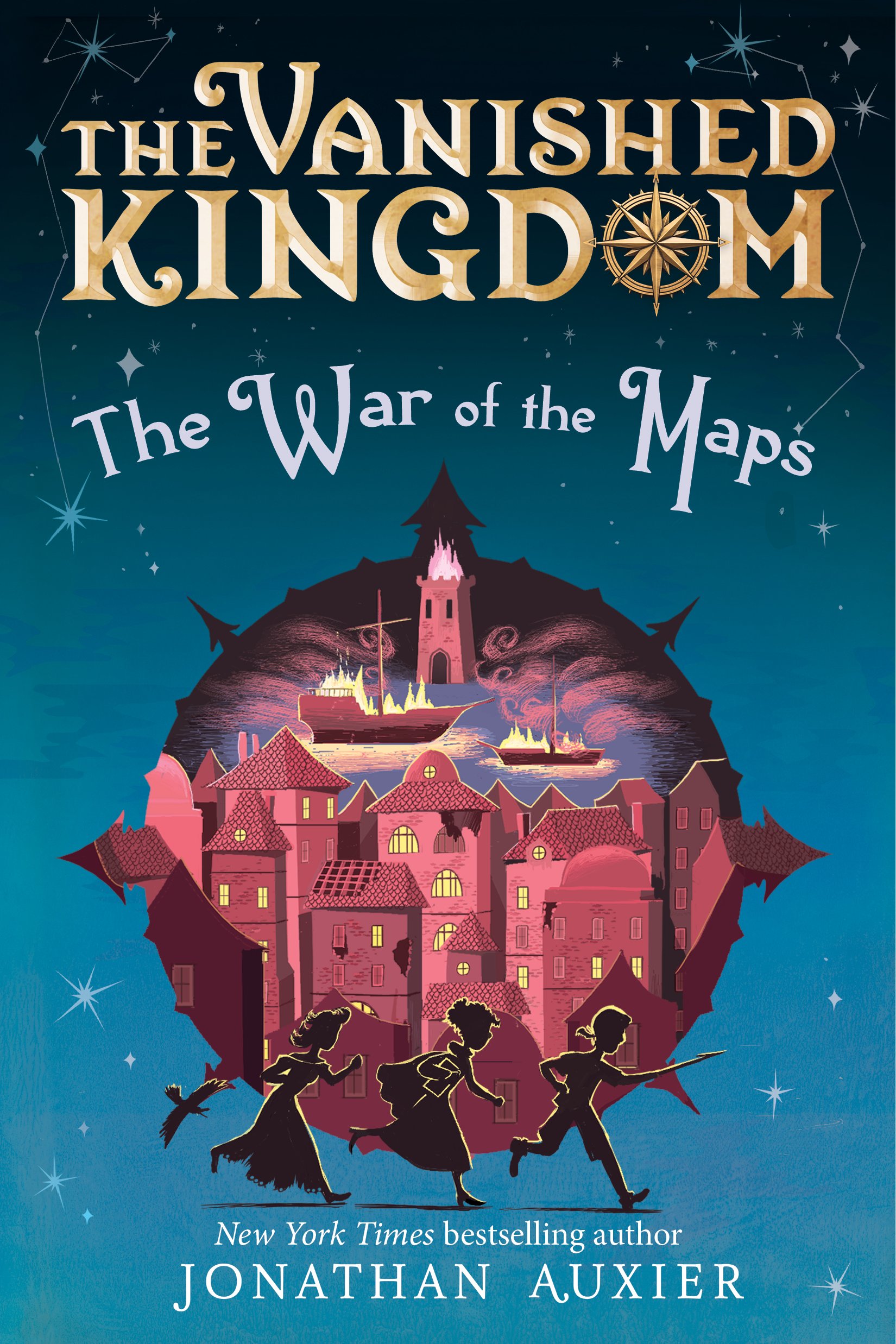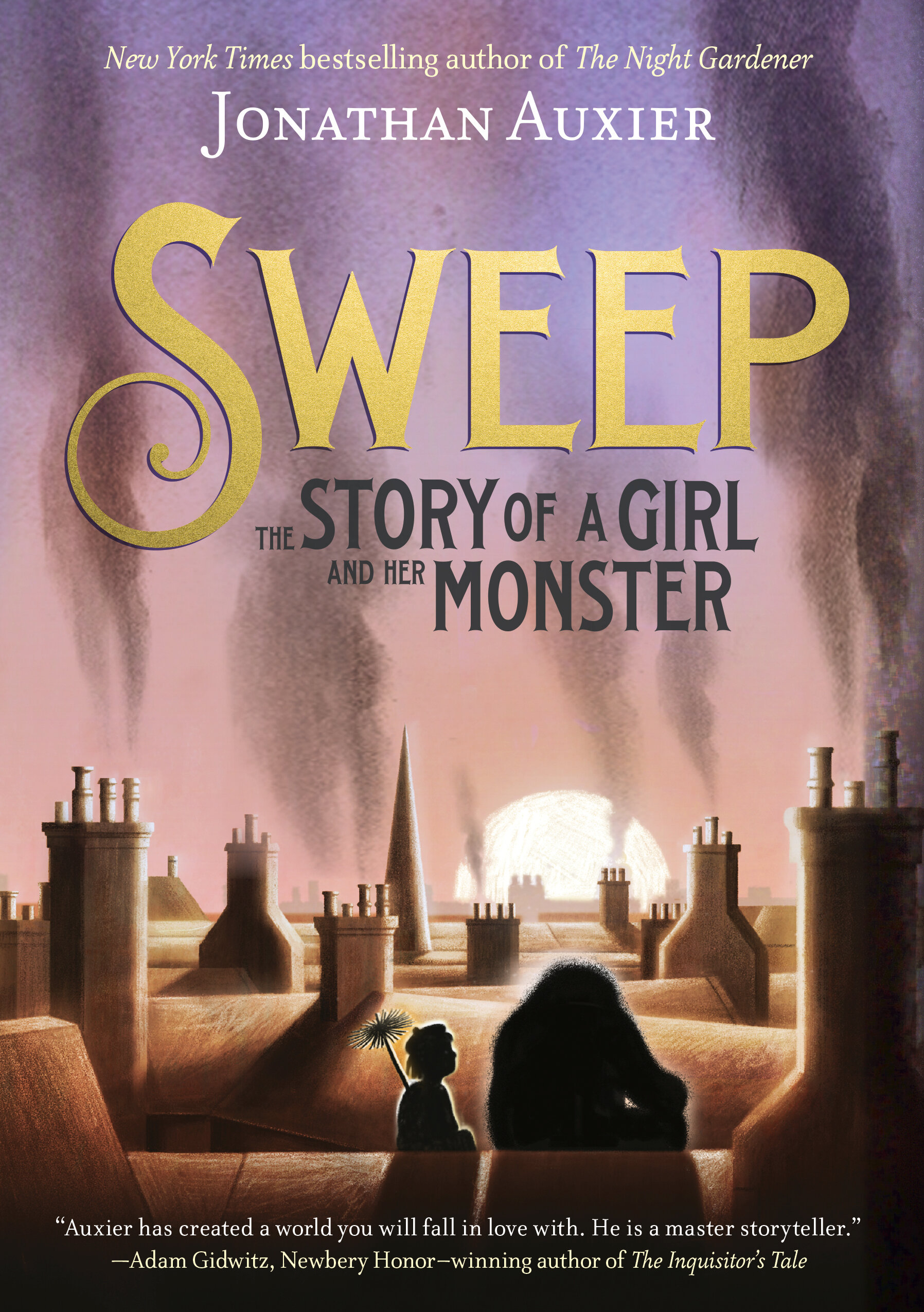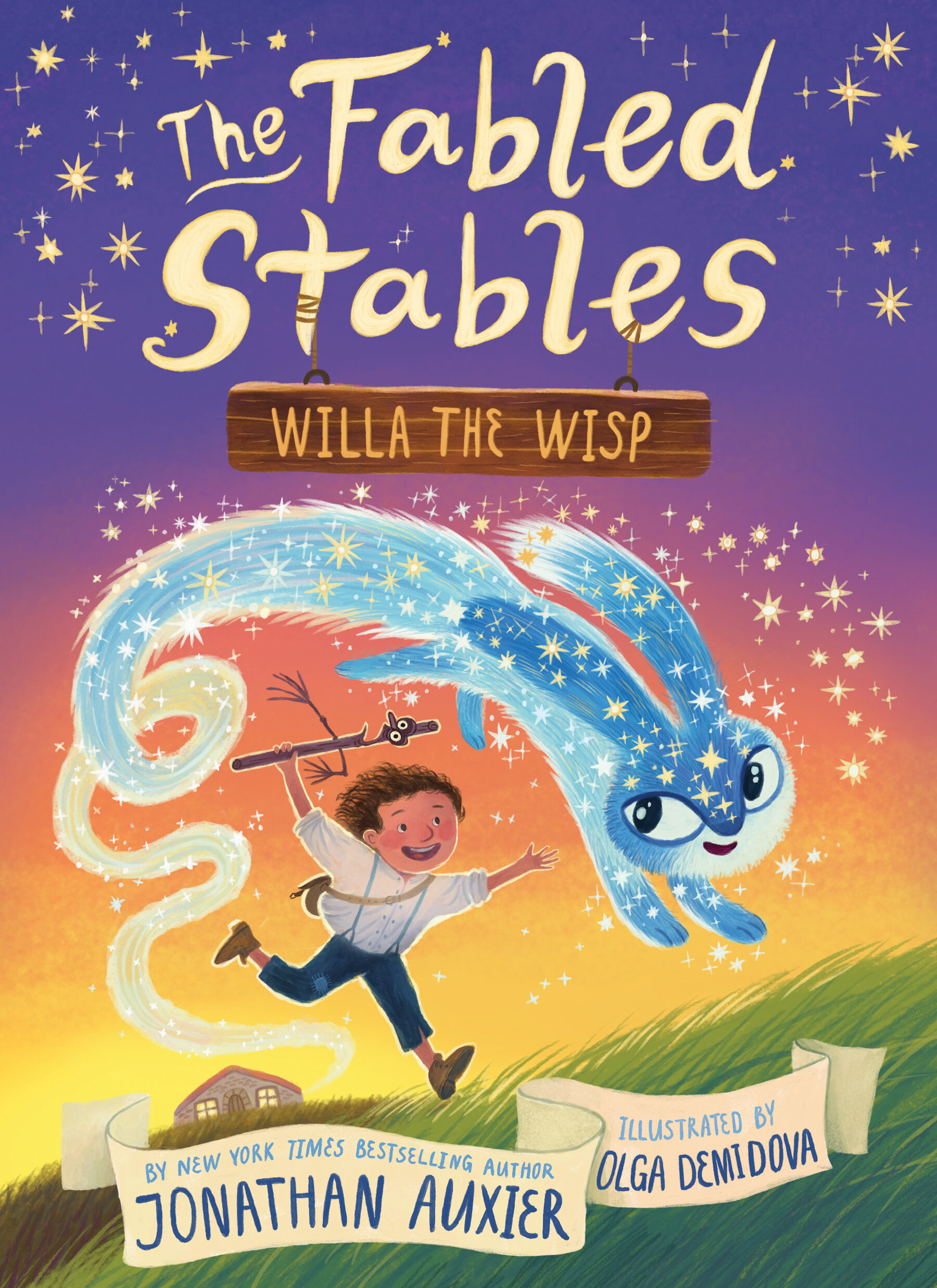Abrams had previously requested that I not publish too much information on my book just yet, but after their own creative director released this info on his blog, the gig was up. Below is a first peek at Peter Nimble & His Fantastic Eyes:

This is a marketing sheet that was handed out at ALA Midwinter. The figure in the top left was scanned from one of my old sketchbooks. The silhouette and background were drawn by the brilliant Gilbert Ford, who created the book cover.[1. Just to be clear, this is not the cover of the book. The real cover is amazing and I can't wait to show it to you! In the meantime, here's a sneak preview!] For those who can't be bothered to click through the image, I'll reprint the text here:
"Now for those of you who know anything about blind children, you are aware that they make the very best thieves. As you can well imagine, blind children have incredible senses of smell, and they can tell what lies behind a locked door—be it fine cloth, gold, or peanut brittle—at fifty paces. Moreover, their fingers are small enough to slip right through keyholes, and their ears keen enough to detect the faintest clicks and clacks of every moving part inside even the most complicated lock. Of course, the age of great thievery has long since passed; today there are few child-thieves left, blind or otherwise. At one time, however, the world was simply thick with them. This is the story of the greatest thief who ever lived. His name, as you’ve probably guessed, is Peter Nimble."
So begins PETER NIMBLE & HIS FANTASTIC EYES, the first novel from 29-year-old Jonathan Auxier. Overflowing with wit and invention, PETER NIMBLE is the utterly beguiling tale of a ten-year-old blind orphan who has been schooled in a life of thievery by his brutal master, Mr. Seamus. One fateful afternoon, as he's picking the pockets of townspeople enraptured by a traveling haberdasher, he "discovers" (steals) a box of magical eyes. When he tried on the first pair, he is instantly transported to an island at the top of the world, where he meets the maker of the eyes, Professor Cake. The professor gives Peter a choice: travel to the mysterious Vanished Kingdom and try to rescue a people in need ... or return back to his master and a life of crime. Peter chooses wisely, and together with Sir Tode, a knight errant who has been turned into a rather unfortunate combination of human, horse, and cat by a grumpy witch, he embarks on an unforgettable adventure in a book destined to become a classic.
At ALA, I noticed a typo in the first paragraph[2. To be fair to my copy editor, it was less a typo than an ambiguous pronoun.] and declared that whichever librarian spotted it first would win a hand-drawn portrait. For about ten minutes there was much yelling and scrutinizing-of-text, until librarian and poet Nina Lindsay spotted the error. Here she is:
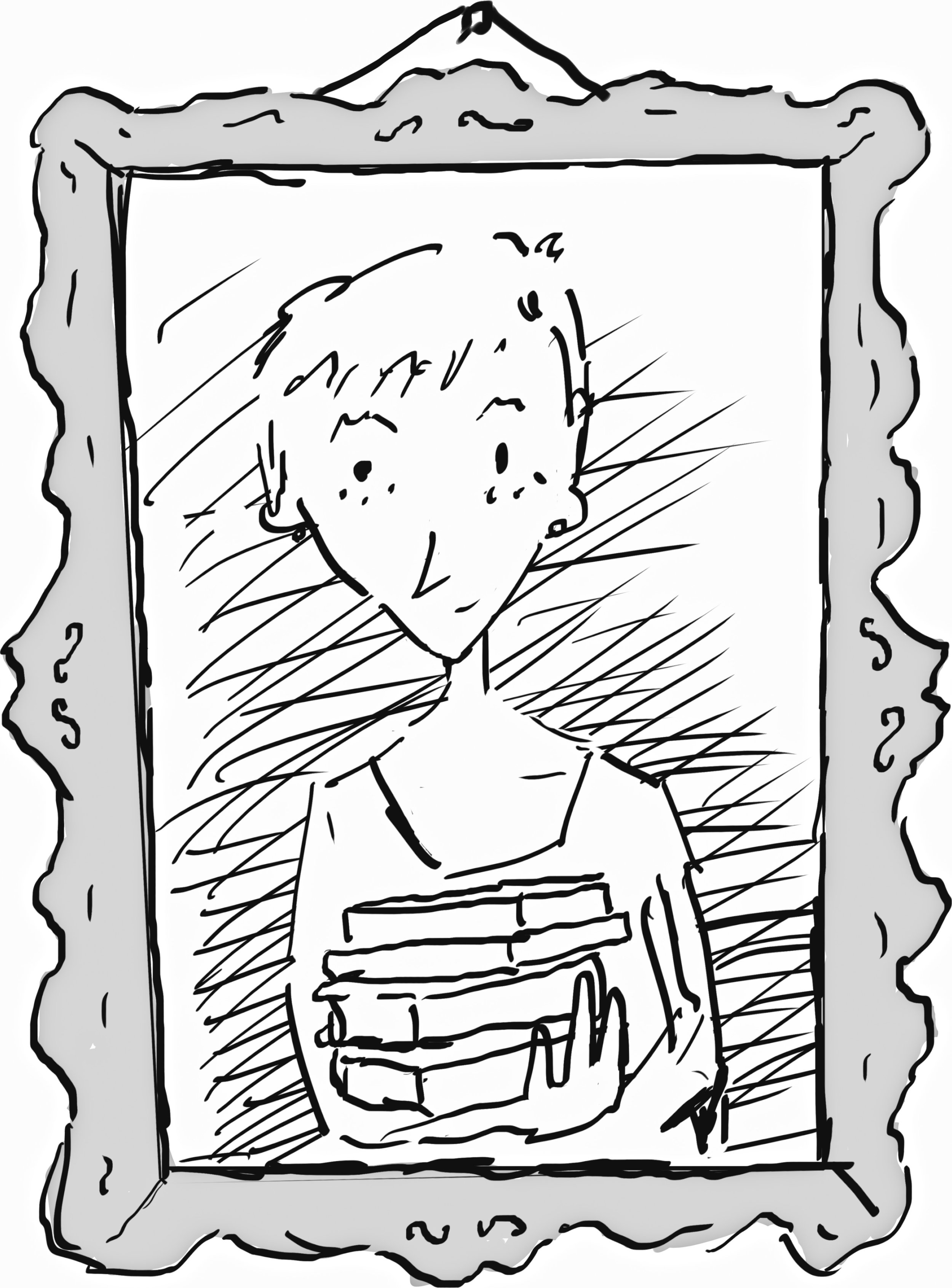 Nice work, Nina!
Nice work, Nina!
